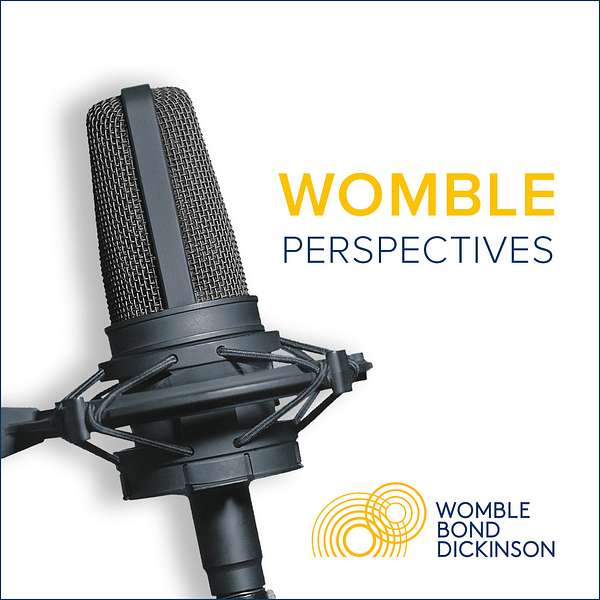
Womble Perspectives
Welcome to Womble Perspectives, where we explore a wide range of topics from the latest legal updates to industry trends to the business of law. Our team of lawyers, professionals and occasional outside guests will take you through the most pressing issues facing businesses today and provide practical and actionable advice to help you navigate the ever-changing legal landscape. With a focus on innovation, collaboration and client service, we are committed to delivering exceptional value to our clients and to the communities we serve.
Womble Perspectives
AI on Trial: Rule 707 and the Future of Machine Evidence
industries, our institutions, and our future. Today we’re tackling a topic that’s both timely and complex: artificial intelligence in the courtroom — and a proposed new rule that could redefine how we treat AI-generated evidence.
Read the full article: Proposed Rule 707 and the Future of Machine Evidence
About the Author
Welcome to Womble Perspectives, where we explore a wide range of topics, from the latest legal updates to industry trends to the business of law. Our team of lawyers, professionals and occasional outside guests will take you through the most pressing issues facing businesses today and provide practical and actionable advice to help you navigate the ever changing legal landscape.
With a focus on innovation, collaboration and client service. We are committed to delivering exceptional value to our clients and to the communities we serve. And now our latest episode.
Welcome back to Womble Perspectives, where we explore the legal developments shaping our industries, our institutions, and our future. Today we’re tackling a topic that’s both timely and complex: artificial intelligence in the courtroom — and a proposed new rule that could redefine how we treat AI-generated evidence.
As most everyone knows by know, AI is a powerful tool that has transformed the way we work, communicate, and even litigate. From drafting documents to analyzing data, AI is streamlining processes across the legal field. With such large strides made in just a few years, we can only imagine the advances to come. And now, it’s knocking on the courtroom door.
With AI’s ability to generate data quickly and efficiently, presenting evidence at trial has become less burdensome than in the past. Gone are the days when gathering and preparing technical evidence required weeks of manual effort. But with this convenience comes a critical question: how do we ensure that AI-generated evidence is reliable?
That’s where Rule 707 comes in.
On May 2, 2025, the U.S. Judicial Conference’s Advisory Committee on Evidence Rules voted 8 to 1 in favor of a new proposal titled “Rule 707 — Machine-Generated Evidence.” This proposed rule is designed to address the growing use of AI in litigation by applying the same reliability standards to machine-generated evidence as we do to expert witness testimony under Rule 702 of the Federal Rules of Evidence.
Let’s break that down.
If a party wants to introduce evidence created by an AI system — and they don’t have a human expert to explain or validate it — that evidence will now be scrutinized just like a live expert would be. The committee emphasized that this rule isn’t meant to encourage replacing human experts with machines. In fact, it’s quite the opposite. The goal is to ensure that when AI is used, it doesn’t bypass the rigorous standards we expect in court.
Now, on the surface, this sounds like a smart move — a way to protect the integrity of the courtroom. But not everyone is convinced.
Some judges and committee members have raised concerns about how this rule would actually work in practice. AI is evolving at a breakneck pace. What’s cutting-edge today might be obsolete tomorrow. And that makes it incredibly difficult to write rules that are both specific and flexible enough to stand the test of time.
And then there’s the question of whether Rule 707 is even necessary.
The U.S. Department of Justice — the only dissenting vote on the committee — believes that Rule 702 already covers machine-generated evidence. In their view, Rule 707 is trying to regulate a future that hasn’t fully arrived yet. They argue that the existing framework is sufficient, and that adding a new rule might create confusion or redundancy.
So, what happens next and what does all this mean for the future of litigation?
It means we’re entering a new era — one where the tools we use to build cases are becoming more complex, and the rules that govern them must evolve just as quickly. Rule 707 is one of the first major attempts to bring AI into the fold of courtroom procedure. Whether it’s adopted or not, it signals a growing awareness that the legal system must adapt to the realities of modern technology.
Thanks for joining us on Womble Perspectives. If you found this episode insightful, be sure to subscribe and share it with your colleagues. And if you have thoughts on Rule 707 or AI in the courtroom, we’d love to hear from you.
Thank you for listening to Womble Perspectives. If you want to learn more about the topics discussed in this episode, please visit The Show Notes, where you can find links to related resources mentioned today. The Show Notes also have more information about our attorneys who provided today's insights, including ways to reach out to them.
Don't forget to subscribe via your podcast player of choice so that you never miss an episode. Thank you again for listening.